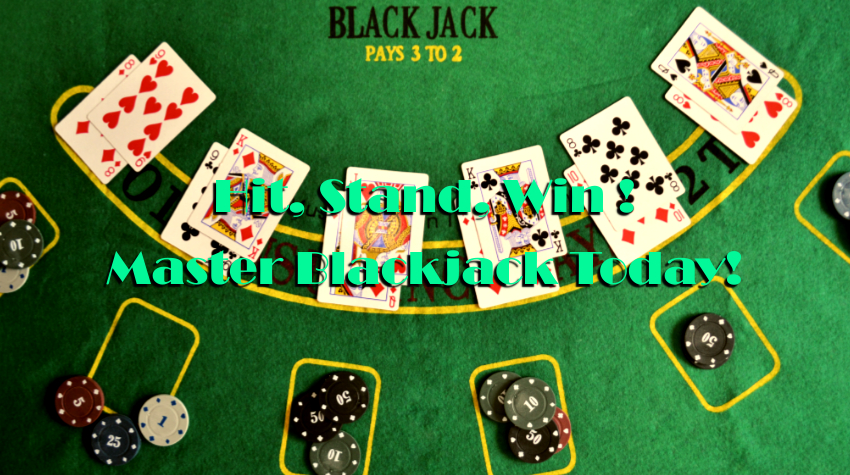Introduction: The Myth and Mathematics Behind Betting Progressions
Every blackjack player, from casual online gamers to serious table veterans, has at some point searched for a way to beat the dealer using logic instead of luck. The allure of a perfect betting system—one that could balance wins and losses and guarantee steady profit—has fascinated gamblers for centuries.
Enter the concept of Blackjack Betting Progression systems.
These betting methods, including well-known strategies like Martingale, Paroli, and Fibonacci, claim to bring order and predictability to a game built on chance. They promise that if you follow a pattern—raise your bet after a win or loss, stay disciplined, and trust the math—you can regain control of your bankroll and possibly even gain an edge over the house.
But can such systems truly change the outcome in a game where each hand is statistically independent?
That’s the question most players struggle with.
Blackjack is unique among casino games. Unlike roulette or baccarat, it combines skill, probability, and decision-making. Every choice—hit, stand, split, or double—affects your expected return. Because of this, betting systems in blackjack attract both mathematicians and strategists who want to blend probability with psychology.
However, not all progression systems are created equal. Some focus on minimizing risk and emotional tilt, while others push the boundaries of bankroll safety in the hope of recouping losses. Understanding the logic behind each approach—and its mathematical limits—is essential before applying it at any casino table.
This in-depth guide from Casino Savvy explores everything about Blackjack Betting Progressions—how they work, why players use them, and whether they can truly increase your long-term winnings.
If you’re completely new to blackjack, start here for the fundamentals:
👉 What Is Blackjack?
Understanding Blackjack Betting Progressions
Definition and Purpose
A betting progression is a structured method of adjusting your wager size after each round, based on your previous result. Instead of making random bets or chasing losses impulsively, progressions encourage strategic, emotion-free betting decisions.
The underlying principle is consistency:
You decide in advance how to respond to wins and losses, following a predetermined sequence. It removes emotional swings and creates a sense of control—something many players find reassuring in an unpredictable game like blackjack.
There are two primary types of Blackjack Betting Progression systems:
- Positive Progression: Increase your bet after a win to capitalize on hot streaks while minimizing losses during cold runs.
- Negative Progression: Increase your bet after a loss to recover previous losses once a win occurs.
Each system follows a logical pattern, but the mathematical expectations remain the same. Blackjack’s built-in house edge—around 0.5% to 1% when using basic strategy—cannot be changed by simply adjusting bet sizes. Still, the right progression system can help manage risk and emotional variance, making play more structured and disciplined.
Why Players Use Progression Systems
1. Emotional Control and Structure
Blackjack is as much a mental game as a mathematical one. Players often lose money not because of poor strategy, but because of emotional decision-making—betting more after a bad beat or walking away too soon after a win.
Betting progressions offer structure. By following a fixed pattern, players avoid tilt and reduce impulsive play, maintaining consistency over multiple sessions.
2. Managing Risk and Reward
Progressions appeal to both conservative and aggressive players:
- Positive systems (like Paroli) let you “press” your winnings during streaks while capping risk.
- Negative systems (like Martingale) cater to those who prefer slow recovery, using mathematics to chase equilibrium.
Both styles attempt to manage short-term volatility, even if long-term probabilities remain unchanged.
3. Encouraging Bankroll Discipline
Casinos thrive on emotional betting. Players who double-wager out of frustration or greed often lose control quickly. A progression method introduces bankroll accountability, allowing you to know exactly how much you’ll risk per session and when to stop.
For new or casual players, this structured discipline can extend playing time and reduce reckless betting.
The Reality Behind the Logic
While betting progressions can certainly shape your playstyle and bring emotional balance, they do not alter blackjack’s core mathematics.
The house still maintains a statistical advantage over time, even if progressions may temporarily boost your confidence or stabilize short-term results.
That’s why professional players use these systems not as shortcuts to win, but as tools for bankroll control and decision consistency. The true power of a Blackjack Betting Progression lies in its ability to manage perception of risk, not in defying probability itself.
Key Takeaway
Betting progressions are valuable when used responsibly and strategically, not as miracle systems. They can:
- Help players stay disciplined during long sessions.
- Smooth out emotional highs and lows.
- Maximize short-term profits during favorable streaks.
But even the most sophisticated progression can’t reverse the laws of probability.
Understanding that distinction is the first step to playing blackjack like a professional—not just a hopeful gambler.
The Two Main Categories Explained
1. Positive Progressions
Positive systems let you raise your bet after a win and reset after a loss.
The logic: “Use the house’s money” to maximize streaks.
Examples:
- Paroli System
- Reverse Martingale
- 1-3-2-6 System
These are ideal for players who want to capitalize on winning streaks without risking large portions of their bankroll.
2. Negative Progressions
Here, you increase your bet after a loss, aiming to recover previous losses with one eventual win.
Popular methods include:
- Martingale
- Fibonacci
- Labouchère
While appealing in theory, negative systems can spiral quickly, especially during long losing streaks—making bankroll management vital.
Popular Blackjack Betting Progressions
1. Martingale System
The Martingale is perhaps the most famous negative progression. You double your bet after every loss, so one win recovers all previous losses plus a profit equal to your original stake.
Example sequence:
- Bet ₱100 → Lose
- Bet ₱200 → Lose
- Bet ₱400 → Lose
- Bet ₱800 → Win → Profit ₱100
Risk: Table limits and bankroll constraints make this strategy dangerous in blackjack, where losing streaks are common.
2. Paroli System (Reverse Martingale)
A positive progression that works in the opposite direction.
You double your bet after each win and stop after three consecutive wins.
Example:
₱100 → ₱200 → ₱400 → Stop.
Advantage: You risk only profits while keeping losses small.
Downside: Winning streaks in blackjack are unpredictable.
3. Fibonacci System
Inspired by the mathematical sequence (1, 1, 2, 3, 5, 8, 13…), this negative progression increases bets slowly after losses, reducing risk compared to the Martingale strategy.
Example:
₱100 → ₱100 → ₱200 → ₱300 → ₱500, etc.
It’s safer, but still vulnerable to extended cold streaks.
4. 1-3-2-6 System
A positive progression optimized for short streaks.
You bet one unit, then three, two, six—returning to one after either four wins or any loss.
It balances moderate risk with high potential reward—favored by disciplined players.
The Mathematics Behind Betting Progressions
The House Edge
No betting system can alter blackjack’s built-in house edge, typically around 0.5 % – 1 % when playing basic strategy.
Progressions manage your money, not your odds.
They can influence short-term results but not long-term profitability.
Probability and Variance
Blackjack’s variance means even skilled players experience streaks.
Progressions exploit these streaks psychologically—rewarding short bursts of luck—but mathematically, each hand remains independent.
How Betting Progressions Affect Your Bankroll
Your bankroll is the foundation of every blackjack strategy—it determines how long you can play, how much pressure you can withstand, and whether your chosen betting system is sustainable.
Understanding how each Blackjack Betting Progression interacts with your bankroll is crucial because while all systems promise structure and control, they differ drastically in risk exposure, payout potential, and recovery pace.
The table below summarizes the basic characteristics of popular progressions:
| Progression Type | Risk Level | Win Potential | Ideal For |
| Martingale | Very High | Moderate | Risk-takers with large bankrolls |
| Paroli | Medium | Moderate – High | Cautious players exploiting streaks |
| Fibonacci | Medium | Moderate | Players preferring a lower recovery |
| 1-3-2-6 | Low – Medium | Moderate | Balanced, disciplined players |
Each progression creates a unique relationship between your bet size and bankroll management. Let’s break down how each one affects your financial stability and psychological approach to blackjack.
1. The Martingale System: High Risk, Fast Burn
The Martingale strategy is infamous for its simplicity and danger. The rule is straightforward—double your bet after every loss until you win, then reset to your original wager.
At first glance, it looks foolproof. In theory, one win recovers all previous losses plus a small profit.
But the risk lies in the exponential growth of your bets.
Example:
Let’s say your base bet is ₱100.
A losing streak might look like this:
₱100 → ₱200 → ₱400 → ₱800 → ₱1,600 → ₱3,200
By the sixth hand, you’ve already wagered ₱6,400—just to win ₱100.
If you hit the casino’s maximum table limit or run out of funds before winning, your entire session collapses.
Impact on Bankroll:
- Requires a large, flexible bankroll.
- Rapid escalation increases psychological pressure.
- One long losing streak can wipe out hours of steady play.
Verdict:
Martingale might suit thrill-seekers or players using low-minimum online tables, but it’s not sustainable for most players. It’s an aggressive progression where one mistake or unlucky streak can empty your bankroll in minutes.
2. The Paroli System: Safer Wins on Hot Streaks
The Paroli System, also known as the Reverse Martingale, follows a different philosophy—press your wins, not your losses.
After every win, you double your bet. After a loss, you reset to your base amount.
Example:
₱100 → Win → ₱200 → Win → ₱400 → Lose → Reset to ₱100
It allows you to ride winning streaks while protecting yourself from long losing streaks. Because you’re only reinvesting profits, your original bankroll stays relatively safe.
Impact on Bankroll:
- Controlled risk since you’re never chasing losses.
- Perfect for players who want to enjoy positive streaks without emotional stress.
- Works best in short-term sessions where streaks occur frequently.
Verdict:
The Paroli is ideal for cautious or medium-risk players. It emphasizes profit momentum, making it one of the most psychologically satisfying progressions—especially for beginners seeking confidence and structure in their play.
3. The Fibonacci System: Patience Over Power
Based on the famous mathematical sequence (1, 1, 2, 3, 5, 8…), the Fibonacci Betting Progression increases wagers slowly after losses, aiming for gradual recovery instead of sudden rebound.
After a loss, you move one step forward in the sequence; after a win, you move back two steps. It ensures steady bankroll usage while still allowing recovery over time.
Example:
₱100 → Lose → ₱100 → Lose → ₱200 → Lose → ₱300 → Win → Step back two → Next bet ₱100
The Fibonacci system minimizes risk escalation, allowing players to survive longer losing streaks. However, it still relies on the idea that a win will eventually appear to offset previous losses.
Impact on Bankroll:
- Slower bet increases make it bankroll-friendly.
- Best for longer sessions and players with patience.
- Extended losing streaks can still accumulate losses, but at a slower pace than Martingale.
Verdict:
For conservative players who want structured progression without high stress, Fibonacci provides consistency and longevity. It won’t yield massive wins quickly, but it offers balance between control and opportunity.
4. The 1-3-2-6 System: The Disciplined Hybrid
The 1-3-2-6 system blends the best of both worlds—low risk with moderate win potential. It’s a positive progression system that capitalizes on short winning streaks while controlling losses.
You start with one betting unit and follow this pattern when you win:
1 unit → 3 units → 2 units → 6 units
After four consecutive wins or any loss, you reset to one unit.
Example:
₱100 → Win → ₱300 → Win → ₱200 → Win → ₱600 → Win → Reset
If you lose early in the sequence, the damage is minimal. If you hit all four wins, your return is substantial.
Impact on Bankroll:
- Low risk, high control—each loss is contained, and wins multiply effectively.
- This activity encourages structured play, perfect for those using basic strategy.
- This strategy works best for disciplined players who prefer slow, steady profit rather than gambling swings.
Verdict:
It is the most balanced Blackjack Betting Progression. It’s especially effective for players who prioritize consistency over luck-driven profit.
The Psychology Behind Bankroll Management
Every progression system manipulates not only your chips but also your mental state.
Understanding your risk tolerance is as important as understanding math.
- High-risk systems (Martingale) feed excitement but trigger anxiety.
- Low-risk systems (1-3-2-6, Paroli) encourage focus, patience, and long-term planning.
The best system is the one that matches your temperament and bankroll—not your desire for quick wins.
Key Tip:
Never bet more than 2–5% of your total bankroll on a single hand. Even the best progression cannot save poor bankroll management.
Aligning Progressions With Your Bankroll
To maximize effectiveness, every player should align their chosen betting system with their bankroll strategy. Here’s how:
- Determine Your Base Unit:
Divide your total bankroll into 50–100 units. For example, a ₱10,000 bankroll means ₱100–₱200 per hand. - Choose a Compatible Progression:
- If you’re aggressive and have deep pockets → Martingale or Fibonacci.
- If you’re cautious or prefer safer play → Paroli or 1-3-2-6.
- Set Stop-Loss and Profit Goals:
Predetermine when to stop—either after winning a certain percentage or losing a fixed amount.
It prevents emotional betting and helps maintain consistency. - Review Session Results:
Analyze your win/loss ratio after each session. Adjust your progression pattern based on observed outcomes and personal comfort.
Key Takeaway: Your Bankroll Defines Your Strategy
Every Blackjack Betting Progression looks tempting when explained mathematically—but real-world play involves psychology, variance, and limits.
A progression that’s perfect for one player might be disastrous for another if their bankroll can’t sustain the volatility.
The goal isn’t to find the “perfect” system, but to find balance—a method that protects your funds while allowing enjoyable, disciplined gameplay.
A successful blackjack player doesn’t let emotion dictate bet sizes; they let probability, structure, and bankroll strategy do the work.
In short:
💡 Your betting system should fit your bankroll—not the other way around.
Psychological Appeal of Betting Progressions
The Illusion of Control
Progressions provide structure and a sense of strategy—even though the odds remain the same.
This illusion of control gives players confidence, making sessions more engaging.
Short-Term Wins and Positive Reinforcement
Winning streaks under a progression system feel amplified.
Players attribute these to “strategy success,” reinforcing behavior—even if luck is the real factor.
Recognizing this psychology helps avoid emotional overconfidence—a common trap in blackjack.
Why Betting Progressions Fail Long-Term
1. Table Limits
Casinos set maximum bet limits to prevent endless doubling. A few losses can quickly hit these caps, making Martingale and similar systems mathematically unsustainable.
2. Bankroll Exhaustion
Negative progressions can drain your bankroll rapidly before the “guaranteed win” arrives.
Even modest losing streaks can erase hours of small wins.
3. Statistical Independence
Each blackjack hand is independent—previous results don’t affect future outcomes.
No system can “predict” a win after a loss, no matter how logical it seems.
Combining Progressions with Strategy
1. Use with Basic Strategy
Betting progressions should complement, not replace, fundamental strategy.
Knowing when to hit, stand, double, or split reduces house edge far more than any progression pattern.
2. Implement Bankroll Limits
Establish a stop-loss and profit goal before playing.
For instance, a player starting with ₱10,000 might:
- Stop if losses reach ₱2,000.
- Cash out after doubling winnings.
This discipline ensures progressions stay tools—not traps.
Practical Example: Testing Systems Side-by-Side
| Scenario | Martingale | Paroli | Fibonacci |
| 10 Rounds, Win Rate = 45 % | Loss ₱1,200 | Profit ₱500 | Break-Even |
| 10 Rounds, Win Rate = 55 % | Profit ₱800 | Profit ₱1,100 | Profit ₱300 |
| 10 Rounds, Win Rate = 35 % | Loss ₱3,000 | Loss ₱900 | Loss ₱1,500 |
Conclusion: Positive progressions like Paroli perform best in moderate win-rate scenarios, while aggressive systems like Martingale collapse under variance.
The Best Betting Progression for Casual Players
For beginners, Paroli or 1-3-2-6 offers a low-risk, easy-to-follow introduction.
They emphasize profit preservation and quick resets, aligning with responsible bankroll management.
Avoid systems that require large escalations or complex tracking—simplicity keeps gameplay enjoyable and sustainable.
Expert Tips for Safer Progression Play
- Start Small: Base units should be under 2 % of total bankroll.
- Set Boundaries: Cap the number of progressions per session.
- Stick to Basic Strategy: Always prioritize correct play decisions.
- Avoid Chasing Losses: Reset after a loss—don’t extend progressions indefinitely.
- Play Low-Edge Variants: Choose single-deck or European blackjack where rules favor players.
Realistic Expectations: Can Betting Progressions Work?
Mathematically, progressions can’t overcome the house edge.
However, they can:
- Add structure to your sessions.
- Enhance focus and bankroll discipline.
- Offer short-term satisfaction and excitement.
For professionals counting cards or analyzing shoe depth, progressions can fine-tune risk exposure—but they’re not a magic formula.
The Role of Betting Psychology in Blackjack
Blackjack isn’t only numbers—it’s a mindset.
Understanding variance, emotional control, and patience often separates consistent winners from impulsive gamblers.
Blackjack betting progression should serve as tools for structure, not illusions of mastery.
When combined with self-awareness, they can make blackjack both entertaining and educational.
Conclusion: The Truth About Blackjack Betting Progressions

\ Hit, Stand, Win! /
So, do Blackjack betting progression really work?
Yes—and no. They work in managing emotions and bankroll flow, but not in defeating the odds.
For Japanese players exploring online casinos, progressions like Paroli or 1-3-2-6 can make sessions more strategic, provided they’re used responsibly and with clear limits.
Ultimately, the smartest players treat Blackjack betting progression as guides—not guarantees.
For more in-depth strategies, bankroll tips, and blackjack insights, visit Casino Savvy—your trusted source for professional casino guides, Japan-focused betting education, and responsible play strategies.









Comments